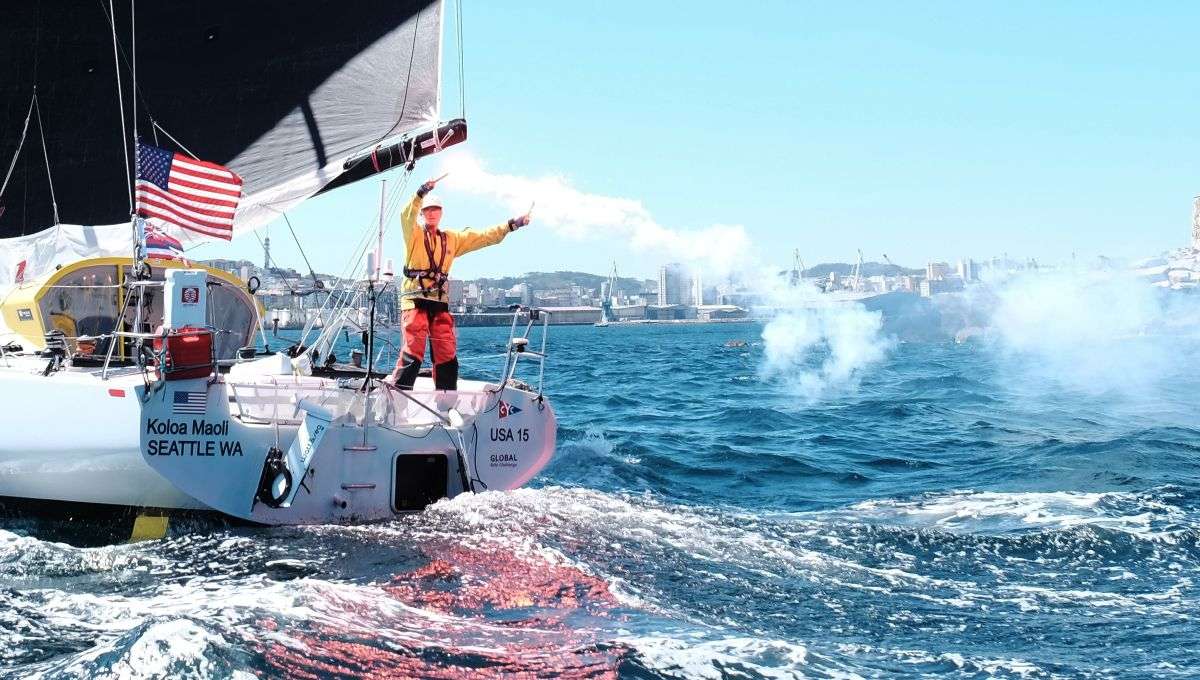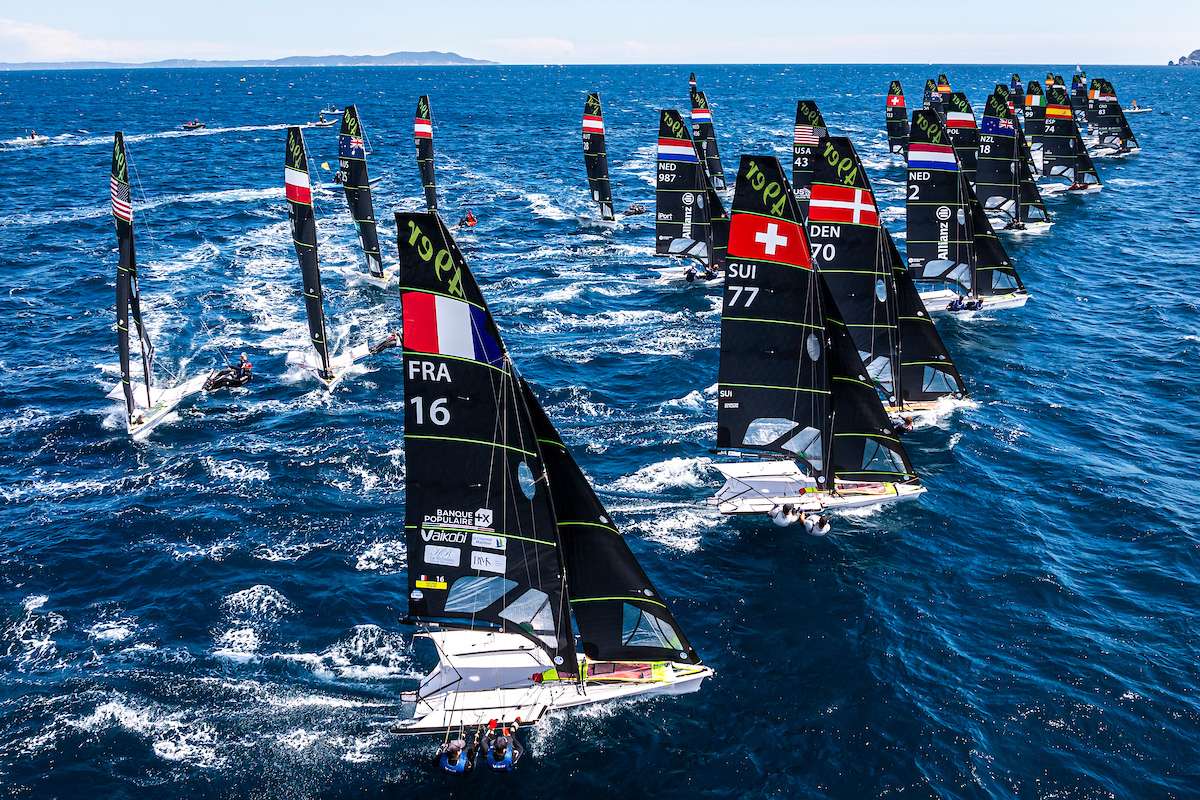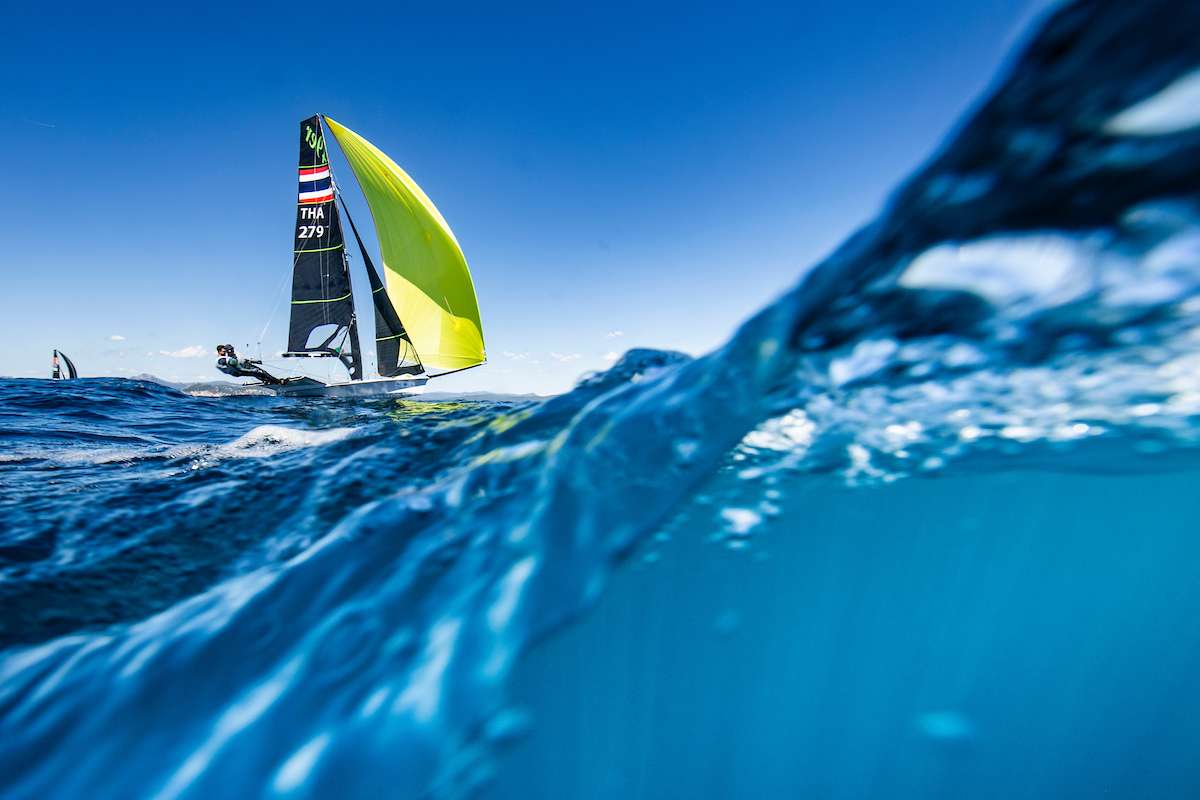CLASSIC RESTORATION: Nerida
Sir James Hardy’s beautiful 1933 gaff cutter Nerida sank at her mooring last June after being struck by runaway yachts during two violent Sydney Harbour storms. David Salter outlines the restoration.
WHERE DO you start’ Nerida was safely up on the hardstand at the Noakes yard in Berry’s Bay but she made a distressing sight. There was extensive damage to the cap rails and bulwarks on both sides. The port runner had been wrenched from the deck. Both crosstrees were split beyond repair. Stanchions had been torn out. The topsides were a mess, and even the solid teak fantail showed a nasty ding. The bent bobstay dangled from the end of the bowsprit leaving behind the bolt holes in Nerida’s stem that had sunk her.
Viewed together, all of this external damage looked pretty dramatic. Individually, item by item, it was fixable. Timber yachts built 75 years ago had impressive scantlings. They were made to survive high levels of punishment that any competent shipwright could usually repair. But one quick trip down the companionway told us Nerida had more serious problems.
After 30 hours on the bottom of Neutral Bay, the muck and chaos below were appalling. Every surface was covered in a stubborn slime of engine oil. All the interior paintwork had blistered under the immense pressures of submersion and was already peeling away. Most of the many drawers and locker doors were swollen and jammed shut. Corrosion had already begun to ruin anything ferrous.
The first job was the saddest. We hauled everything out of the boat and dumped it in a nearby tin shed. More than 30 years of treasured boat ‘stuff’ ‘ from the trusty kettle and a set of unique 1980 America’s Cup wet-weather gear to Sir James’s official Knight Batchelor burgee ‘ it all ended up in one foul-smelling pile. With the boat empty, the whole interior could then be hosed out with mild detergent.
The patient had only been stabilised; now it was time for the Boat Doctor’s prognosis. Norm Hyett, a legendary Australian offshore sailor and shipwright, has looked after Nerida for decades from his Mosman Bay shed. After an hour spent clambering over the salvaged boat, he rubbed his commanding chin yet again and pronounced the verdict: ‘Mate, it’s all fixable. It’s just a matter of how much it’ll cost and how long it’ll take.’ What the philosophical Norm had tactfully left unsaid was the greatest of all truisms about working on boats: any given job will take twice as long as you first thought, and cost twice as much.
By now the Poor Bloody Owner had returned from Valencia to confront the disaster. The emotional impact of the yacht’s sinking on Sir James must have been huge. Nerida was built in Adelaide for his father from New Zealand kauri and Western Australian jarrah to a design commissioned from Alfred Mylne & Sons in Scotland. The 45-foot cutter is part of Jim’s flesh and blood. Some of her frames were cut from Blue Gums felled on the Hardy family vineyards at McLaren Vale. Now he had to regain ownership after salvage and supervise the repair of a yacht his insurance company had declared a ‘write off’.
A workable division of labour was soon agreed. Sean Langman’s skilled people at Noakes removed the mast and repaired the stem and bobstay so that Nerida could be returned to the water and towed to the Hyett workshop at Mosman marina. While Norm began the repairs on deck, Noakes would refurbish the mast and rigging. John Crooke, an old Queensland sailing friend, was set the task of building exact replicas of the shattered crosstrees. New batteries were installed and Kerry Walden, a wizard with old diesels, somehow got the big Perkins working again. After weeks of worry and doubt, things were finally beginning to happen.
Most of the yacht’s original external timberwork had survived the sinking quite well. But the cabin top was so distorted that Hyett declared it ‘Gone to God’. His replacement roof was so artfully done that once the new work was painted and varnished people who’d sailed on the boat for 25 years failed to spot the substitution. Elsewhere on deck, Norm’s astonishing carpentry managed to save and re-fit most of the original teak combings and beadwork so that Nerida’s distinctive classic look was preserved.
But the extensive damage to most of the interior cabinetwork and fittings proved much more difficult to repair. Many of the yacht’s intricate dovetailed drawers and locker doors had to be patiently removed, dismantled, straightened and then rebuilt on the carpentry bench. Replacement pull-handles were sourced from Carl Sriber, the owner of Suraya and a fellow classic yacht enthusiast. It took months just to realign the massive fridge door and then find replicas of the traditional ‘pub’ hinges and latch handle.
Electrical refurbishment
The electrics were beyond repair and had to be entirely replaced. Rewiring old boats is always difficult anme-consuming so this soon became the most expensive single aspect of the whole restoration. A neat new switch panel and battery controls were discreetly tucked away inside the engine compartment, replacing the huge old knife switch straight from the Frankenstein movies. It was sad to see it go. In the forepeak, Guy Oliver’s team of ‘sparkies’ performed a minor electrical miracle getting the 24-volt capstan motor to run again.
Instant corrosion had reduced all the lights, radios, instruments and the chart plotter to useless electronic junk. New gear was fitted but, typically, it wasn’t possible to find replacement instrument read-outs of the original dimensions. For some obscure reason, the modern versions are deeper behind the dials so Hyett had to fabricate an extra teak panel to mount the new “clocks” on the cockpit bulkhead.
The first phase of repairs was completed with Nerida still in the water, but once the painting and more intricate internal work began the boat was hauled up on the slipway that adjoins Norm’s workshop. The big hull made a rather incongruous sight nestled among the Mosman gum trees but her new position reduced the hundreds of back-and-forth trips that rob so many hours from labour-intensive projects of this kind.
During these long weeks of patient work some treasured hand-made items that had been presumed lost during the sinking and salvage mysteriously reappeared. The beautiful teak T-shaped removable grate set into the cabin floor at the foot of the companionway to allow access to the bilge and engine water intake suddenly turned up. Likewise, the huge and heavy timber boat hook ‘ complete with its distinctive cast brass end fitting ‘ inexplicably reappeared like a faithful old dog coming home.
The job of replacing the yacht’s ruined bunk mattresses fell to Sir James’ wife Joan. She seized the opportunity to change the covering fabric from the traditional dark blue to something more to her liking ‘ with stripes. When the mattresses arrived none of us could resist the obvious joke that the covers must have been made from a pair of Sir James’s old pyjamas.
Just before Christmas, a repainted Nerida was put back in the water and we motored her around to the Noakes yard to receive the repaired mast. As the new crosstrees were fitted, Jim noticed that while the originals had been Southern spotted gum (which floats) their replacements were made of Queensland spotted gum (which doesn’t). Everyone agreed that this was all very interesting, but hardly a serious concern.
Next job was to straighten the headfoil which had been fiercely hooked by the bow anchor of a runaway yacht during the storm that sank Nerida back in June. The mast was then stepped on the next low tide and the old girl finally started to look like a yacht again. The following week we bent on the sails and stowed replacements for all the required ‘Enclosed Waters’ safety equipment. Here we go!
It wasn’t until late January that there was an opportunity for the Nerida ‘mob’ to get together for a celebratory first sail. (Unfortunately, Sean Langman was still at sea bringing his little gaffer Maluka back from Lord Howe Island.)
On the appointed day ‘Huey’ blessed us with a crisp Sydney Harbour nor’easter. Hearts lifted as we scooted down the harbour under full sail. Sir James proposed a champagne toast while his yacht heeled to her task for the first time in more than seven months. We were soon all enjoying her familiar, sure-footed motion and the gentle gurgle off the quarter wave as the lee rail dipped under in the gusts.
With a drink in one hand and jib sheet in the other, I gave silent thanks that Nerida hadn’t been so badly damaged as to be beyond repair ‘ and to the legion of skilled craftsmen and mates who’d all contributed so much to her happy restoration.
She’ll be good for another 75 years ‘ at least.
























